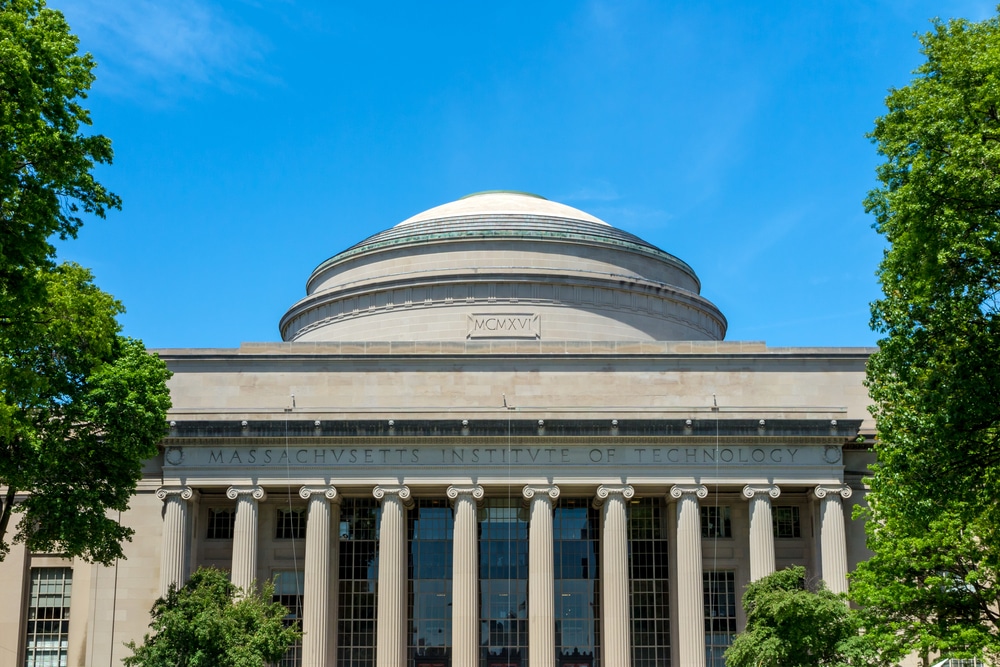Applying to the Massachusetts Institute of Technology (MIT) can be both a rewarding and challenging process. Understanding the core components of the Regular Decision Process can help you effectively navigate your application and present your best self. This article will guide you through the key stages, evaluation criteria, interview process, admissions committee review, and the notification and response timeline.
The Basics of MIT’s Regular Decision Process
The MIT Regular Decision Process is a comprehensive, holistic review conducted by the Admissions Committee to admit a diverse and dynamic class of students each year. This article provides an insightful look at the various stages and key elements of this process.
Key Dates and Deadlines
The primary application deadline for the MIT Regular Decision Process is January 1. After this date, all application materials, including standardized test scores, teacher evaluations, and school reports, must be submitted by February 1. By mid-March, applicants can expect to receive their admissions decision.
Please note that these dates can change, so it is always beneficial to confirm deadlines directly from the MIT Admissions website.
Required Materials for Application
For the application to be considered complete, applicants are required to submit various materials. These include the Common Application or Coalition Application, MIT’s supplemental essays, two letters of recommendation from teachers in different subjects, standardized test scores (SAT or ACT), and a secondary school report, including your transcript and counselor recommendation.
Other optional components, such as Art, Music, Dance, or Maker portfolios and Research abstracts, can also be submitted.
The Common Application or Coalition Application serves as the foundation of the MIT Regular Decision Process. It is a comprehensive form that collects personal information, academic history, extracurricular activities, and essays. This application allows students to showcase their achievements, experiences, and aspirations, providing the Admissions Committee with a holistic view of the applicant.
MIT’s supplemental essays are an integral part of the Regular Decision Process. These essays provide applicants with the opportunity to delve deeper into their interests, passions, and experiences. They allow applicants to demonstrate their writing skills, critical thinking abilities, and alignment with MIT’s values and mission. The supplemental essays are carefully reviewed by the Admissions Committee to gain insight into the applicant’s intellectual curiosity, creativity, and potential contributions to the MIT community.
Teacher evaluations play a crucial role in the Regular Decision Process. These evaluations provide an opportunity for teachers to assess the applicant’s academic abilities, work ethic, character, and potential for success at MIT. The Admissions Committee values the perspectives of teachers who have had direct interactions with the applicant, as they can provide valuable insights into the applicant’s strengths, weaknesses, and overall fit for MIT.
Standardized test scores, such as the SAT or ACT, are another important component of the Regular Decision Process. These scores provide a standardized measure of the applicant’s academic abilities and potential. While MIT does not have strict cutoffs for test scores, they are considered in conjunction with other application materials to assess the applicant’s overall academic profile.
The secondary school report, including the transcript and counselor recommendation, provides the Admissions Committee with a comprehensive overview of the applicant’s academic performance, course selection, and school environment. The transcript showcases the applicant’s grades, rigor of coursework, and any notable academic achievements. The counselor recommendation offers insights into the applicant’s personal qualities, leadership potential, and contributions to the school community.
In addition to the required materials, MIT also allows applicants to submit optional components. These components, such as Art, Music, Dance, or Maker portfolios, provide an opportunity for applicants to showcase their talents and passions outside of the traditional academic realm. These portfolios allow students to highlight their creativity, innovation, and dedication in various artistic or technical fields. Research abstracts, on the other hand, enable applicants to share their involvement in scientific research and showcase their intellectual curiosity and problem-solving skills.
The MIT Regular Decision Process is a thorough and meticulous evaluation of each applicant’s qualifications, achievements, and potential. The Admissions Committee considers a wide range of factors, including academic performance, extracurricular involvement, essays, recommendations, and optional components. By conducting a holistic review, MIT aims to identify students who not only excel academically but also possess the qualities and characteristics that align with the institute’s mission of advancing knowledge and making a positive impact on the world.
The Evaluation Criteria for MIT’s Regular Decision Process
The assessment of applicants to MIT goes beyond just grades and test scores—it includes the evaluation of many factors, each holding unique importance.
When evaluating applicants for regular decisions, MIT takes into consideration a range of criteria that go beyond academic achievements and rigor. While excelling academically is important, MIT also looks for students who have taken the most challenging courses available to them, such as Advanced Placement (AP) or International Baccalaureate (IB) courses in high school. This demonstrates a commitment to academic excellence and a willingness to push oneself intellectually.
However, strength of character, dedication to learning, and potential to make significant contributions to the MIT community are equally important. MIT seeks students who not only excel in the classroom but also exhibit qualities that will contribute to the vibrant and diverse campus environment. These qualities can include leadership, teamwork, and a passion for making a positive impact on the world.
Furthermore, MIT values students who have dedicated significant time and effort toward meaningful extracurricular activities. While it is not about the number of activities, MIT appreciates individuals who showcase their leadership skills, community involvement, and passion through these activities. Whether it is participating in a science club, volunteering at a local organization, or leading a student-run initiative, MIT seeks students who have made a difference in their communities and have demonstrated a commitment to their interests and passions.
Nonetheless, remember that it’s not just about the quantity of activities but the quality, impact, and dedication you demonstrate in the ones you choose. MIT values depth over breadth, so it is important to showcase your genuine commitment and the impact you have made in your chosen activities.
Lastly, the qualities that students exhibit can tell a lot about their potential to excel at MIT and beyond. Applicants should strive to display their unique attributes and potential through their essays and interviews, showcasing characteristics such as creativity, initiative, resilience, and a sense of social responsibility. MIT seeks students who are not only academically talented but also possess the personal qualities that will contribute to the MIT community and make a difference in the world.
The Role of Interviews in the Decision Process
Interviews play an integral role in the MIT Regular Decision Process. Conducted by an MIT alumni, the interview provides an opportunity for applicants to showcase their personalities beyond the written application.
During the interview, applicants have the chance to engage in a dynamic conversation with an experienced MIT graduate who can offer valuable insights into the institute’s culture and community. This interaction allows the admissions committee to gain a deeper understanding of the applicant’s character, motivations, and potential fit for MIT.
Moreover, the interview serves as a platform for applicants to highlight their unique qualities and experiences that may not have been fully captured in their written application. It provides a space for them to articulate their academic interests, extracurricular activities, and future aspirations in a more personal and nuanced manner.
Preparing for the Interview
In preparation for the interview, applicants should be ready to talk about their academic interests, extracurricular activities, and future aspirations. They should also have a clear understanding of why they are interested in attending MIT and what unique contributions they could make to the campus community.
It is essential for applicants to conduct thorough research on MIT’s academic programs, research opportunities, and student organizations. By familiarizing themselves with the institute’s offerings, applicants can demonstrate their genuine interest in MIT and their ability to make the most of the resources available to them.
Additionally, applicants should reflect on their own experiences and accomplishments, considering how they align with MIT’s values and mission. This self-reflection will enable them to articulate their motivations and goals effectively during the interview.
What Interviewers Are Looking For
Interviewers are interested in understanding more about the applicant’s character, their interest in MIT, and their potential fit for the institute. They value authenticity, enthusiasm, and thoughtfulness in the responses of the applicant.
During the interview, interviewers assess the applicant’s ability to think critically, communicate effectively, and engage in meaningful conversations. They are particularly interested in hearing about the applicant’s experiences that have shaped their academic and personal growth, as well as their ability to overcome challenges.
Furthermore, interviewers seek to gauge the applicant’s passion for learning and their curiosity about the world around them. They are looking for individuals who not only excel academically but also demonstrate a genuine desire to make a positive impact through their education and future endeavors.
Ultimately, the interview serves as a valuable opportunity for both the applicant and the interviewer to engage in a meaningful dialogue, allowing the admissions committee to gain a more comprehensive understanding of the applicant’s potential as a future member of the MIT community.
Understanding the Admissions Committee Review
The Admissions Committee comprehensively reviews each application multiple times before they make a decision. The review process is conducted in two main stages:
The First Review: Academic and Extracurricular Assessment
During the first review, each application and all supplemental materials are read in its entirety. The committee evaluates the applicant’s academic performance, the rigor of the curriculum, and their extracurricular engagements.
A strong candidate will have demonstrated both academic excellence and significant contribution or commitment in a number of activities outside of the classroom.
When assessing academic performance, the committee takes into consideration not only the applicant’s grades, but also the difficulty of the courses they have taken. They look for students who have challenged themselves academically and have excelled in their studies.
Furthermore, the committee evaluates the rigor of the curriculum the applicant has pursued. They consider whether the applicant has taken advanced courses, such as honors or AP classes, and how well they have performed in those courses. This helps them gauge the applicant’s ability to handle the academic demands of the institution.
In addition to academic performance, the committee also pays close attention to the applicant’s extracurricular engagements. They look for students who have actively participated in clubs, sports, community service, or other activities outside of the classroom. The committee values well-rounded individuals who have shown dedication and leadership in their extracurricular pursuits.
The Second Review: Personal Qualities Assessment
The second review is focused on assessing the applicant’s personal qualities, which include attributes such as motivation, creativity, independence, leadership potential, ethical judgment, and resilience in the face of adversity.
When evaluating motivation, the committee looks for applicants who have demonstrated a genuine passion for their chosen field of study. They want to see that the applicant is driven and has a clear sense of purpose in pursuing their academic and career goals.
Creativity is another important quality that the committee considers. They seek applicants who can think outside the box, come up with innovative ideas, and approach problems from different angles. Creativity is highly valued as it brings fresh perspectives and fosters intellectual growth within the academic community.
Independence is also a key attribute that the committee looks for. They want to see that the applicant has the ability to work independently, take initiative, and be self-motivated. This is important as it indicates that the applicant will be able to thrive in a university environment where self-directed learning and personal responsibility are essential.
Leadership potential is highly regarded by the committee. They seek applicants who have demonstrated leadership skills and have the potential to make a positive impact on their community. Whether it is through leading a club, organizing events, or taking charge of group projects, the committee wants to see evidence of the applicant’s ability to inspire and motivate others.
Ethical judgment is another crucial quality that the committee assesses. They want to ensure that the applicant possesses a strong sense of integrity and ethical decision-making. This is particularly important in fields such as medicine, law, or business, where ethical considerations play a significant role.
Lastly, the committee evaluates the applicant’s resilience in the face of adversity. They want to see that the applicant has the ability to overcome challenges and setbacks, and has learned from those experiences. Resilience is highly valued as it indicates the applicant’s ability to adapt and thrive in a demanding academic environment.
Overall, the Admissions Committee takes a holistic approach to reviewing applications. They carefully consider both the academic achievements and personal qualities of each applicant to ensure they select individuals who will contribute positively to the university community and succeed academically.
The Notification and Response Process
Once the Admissions Committee has reached a decision, the notification process begins.
How and When Decisions Are Released
Decisions are released around the middle of March. Applicants will be notified whether they have been admitted, denied, or waitlisted. The decision is communicated through an online portal, details of which are emailed to the applicant.
Next Steps After Receiving a Decision
If you are offered admission, a response is required by May 1, which is commonly known as College Decision Day. If you are waitlisted, you may be offered admission later, depending on the number of students who decide to enroll. You are encouraged to explore other college options as you wait for a final decision.
If you are denied admission, we encourage you to pursue your educational goals at another institution and to apply to MIT as a transfer student after you have completed a year of college elsewhere.
No matter the decision, remember that college admission does not define your worth or potential. Every path leads to unique opportunities, and we wish you the very best in your journey.
How AdmissionSight Can Help You with College Admissions
AdmissionSight is a college consulting firm that provides personalized assistance to students throughout the college admissions process. Here are some ways that AdmissionSight can help you:
Admissions strategy: AdmissionSight can help you develop a strategic plan for your college application process. Our professional consultants can assist with identifying schools that are a good fit for your academic, extracurricular, and personal goals and help you plan and prioritize your application strategy.
Application review: AdmissionSight can review your application and provide feedback on how to improve it. We can offer suggestions on making your application stand out and highlighting your strengths and unique qualities.
Essay coaching: AdmissionSight can help you craft compelling essays that showcase your personality, goals, and achievements. We can guide you through the essay writing process and provide feedback on your drafts to help you refine your writing.
Interview preparation: AdmissionSight can provide interview coaching to help you feel confident and prepared for college interviews. Our experts can offer tips on how to present yourself professionally and how to answer common interview questions.
Extracurricular planning: AdmissionSight can help you plan and develop your extracurricular activities to make them more impactful and meaningful. We can suggest activities that align with your interests and goals and provide guidance on demonstrating your leadership and initiative.
Overall, AdmissionSight can provide valuable guidance and support throughout the college admissions process to help you maximize your chances of getting accepted into the college of your choice.
With a high success rate of over 75%, we have built a strong network in the past decade. Book an initial consultation today, free of charge!










































